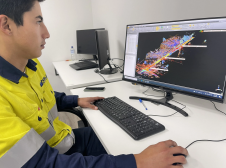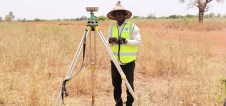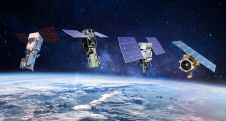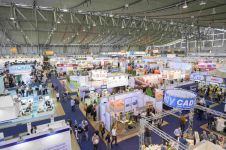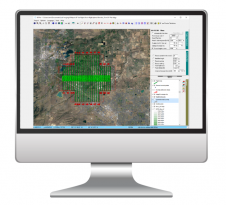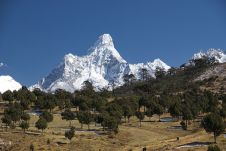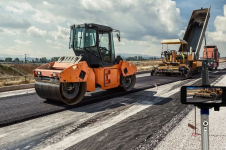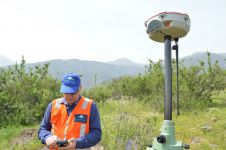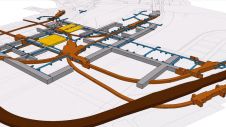Captivated by Technology and a Skateboard - Leica Roadshow 2015
This article was originally published inGeomatics World.
Twickenham Stadium, the home of rugby, was the venue for the final date for this year’s Leica Roadshow. As ever, a keen crowd heard the company’s experts talking about the latest technology in the morning and spent the afternoon on equipment demonstrations outside the stadium, reports Richard Groom.
Opening proceedings Mike Skicko assured the audience that they would be ‘captivated’ and indeed we were. He stressed Leica Geosystems’ commitment to pre- and post- sales support through online services and training as well as via the company’s network of regional representatives. He also reiterated the offer of meeting room space for customers at Milton Keynes.
The morning’s presentations were delivered by James Whitworth, UK sales manager, Nathan Ward, asset collection segment manager and Paul Burrows, HDS/UAS and mobile mapping manager.
Whitworth described the developing role of surveying in terms of virtualising the real world. BIM was once again top of the agenda. Leica sees its role as taking BIM out of the office and into the field – describing it as the ‘BIM field trip’. To do this demands close links with BIM in the office and this is being enabled via a new strategic partnership between Leica and Autodesk.
High Accuracy Handheld
The Zeno 20 is Leica’s new handheld GI data collector. It is designed to meet a number of challenges – increasing data volumes, capturing the important information and making sense of the changing world. Leica sees two markets for the Zeno – enterprise data and simple projects. Besides being a demonstrably rugged device subjected to rigorous testing, it also incorporates a multi-constellation GNSS receiver, which can process network RTK signals to achieve ‘centimetre accuracy’ – in practice about 5cm. This is in response to user demands for more accurate GI. The Zeno 20 can use either Android or Windows Mobile operating systems. Applications include, according to Leica, providing ground control for UAS aerial photography, BIM data and forestry management.
Super-DISTO
A new DISTO, the S910, is almost a theodolite because, when mounted on a tripod, it measures horizontal as well as vertical angles. Put a Zeno 20 on the same tripod and what do you have? The answer is a rather useful piece of equipment. A piece of equipment that needs some survey sense to use. How ironic that low precision equipment should demand more expertise than its high-spec cousins!
The software for asset data collection is an Android app called Leica Zeno Mobile, which turns it into something that ‘even a kid could use’. A thought that prompted a video starting with son on skateboard and dad on Zeno and ended with son on Zeno – we couldn’t see what son was doing – but dad was falling off skateboard!
Crowning Achievement
There can be little doubt that Leica’s crowning achievement in the last twelve months has been the P40 laser scanner. I know a company that bought one as soon as it was launched. Its defining feature is its precision – noise reduction over the full range of the instrument. This must make cloud-to-cloud registration a lot more reliable. It looks like any other Leica scanner on the outside but its innards, according to Paul Burrows, are 85% new. It also obtains returns off black and shiny surfaces that were previously severe problems. Not only does the P40 have a range of 270m and incorporate a filter that removes features beyond the ambiguity range, but it can also be used for close-range scanning of objects like statues due to ‘mixed pixel filtering’ for pixels along edges.
“Be Captivated”
‘Captivate’ is the name that Leica has given to a new interface for all its equipment including a new series of total stations – TS16, TS60 and MS60. The user is able to pan, tilt and zoom into 3D views in the field via a familiar touch screen. Inevitably, the captivate interface looks most impressive on a large tablet and Leica’s CS35 rugged Windows tablet can also act as a PC, which could eliminate the need to transfer data between the field and the office, or indeed a second computer in the office.
Automatic target recognition (ATR) has now been developed so that after setting up, the instrument can detect all objects returning a signal whether they are reflective tape, shiny surfaces or survey prisms. The user can then tell the total station to ignore the false targets. Similarly, if given a file of control coordinates, the instrument can identify and observe prisms set on the control points automatically. It also ‘learns’ the dynamics of a moving prism so that it knows where to look, should it lose lock. The new range of instruments can augment reality by superimposing the surveyed objects onto the instrument camera image, which makes it much easier to spot mistakes – such as incorrect prism height.
This article was published in Geomatics World September/October 2015
Make your inbox more interesting.Add some geo.
Keep abreast of news, developments and technological advancement in the geomatics industry.
Sign up for free

